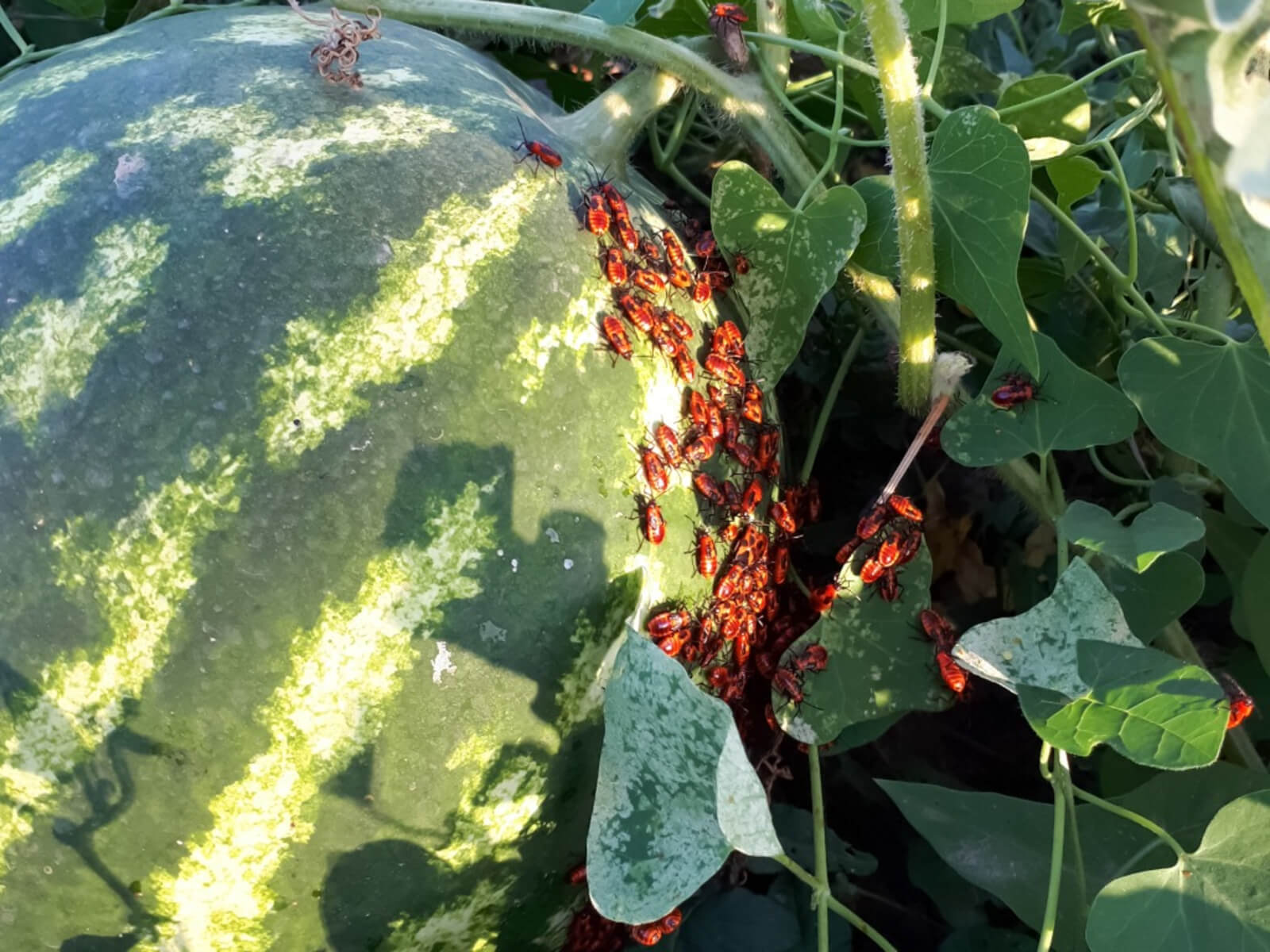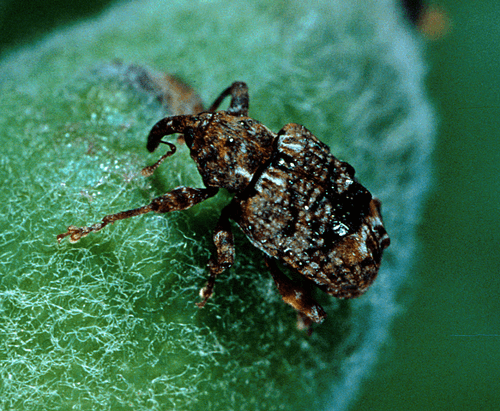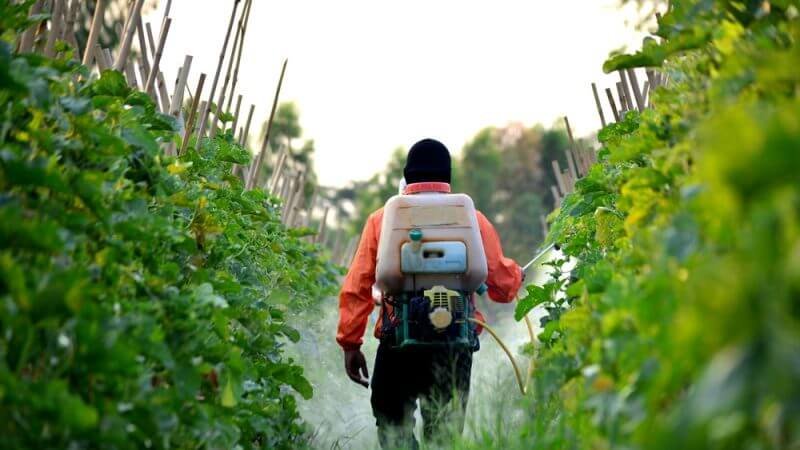Nov 9, 2021IR-4: Curbing use of neonicotinoids may cause ‘great disruption’ to ag
The IR-4 project established by the USDA provides information to the U.S. Environmental Protection Agency to support use of neonics imidacloprid, thiamethoxam and clothianidin in specialty crops such as fruits, vegetables and nuts; analysis concludes restricting use of these active ingredients may cause great disruption to the agriculture industry and inadvertently create unintended consequences.
Below is a letter by the IR-4 project regarding neonics:
October 21, 2021
To Whom It May Concern,
RE: IR-4 benefits assessment to support the use of clothianidin, thiamethoxam and imidacloprid neonicotinoid insecticides in U.S. specialty crops.
The IR-4 Project is a federally-funded national research program that comprises of a unique partnership between the USDA, U.S. Environmental Protection Agency (“EPA”), agrochemical industry, the public sector crop protection enterprise, commodity groups, and growers. Based on grower group’s priorities and critical needs, IR-4 is charged to assist with the identification of tactics and subsequent registration of safe and effective pest management solutions for specialty crops (e.g., fruits, vegetables, nuts, herbs, ornamentals) and low volume “minor uses” on major row crops. IR-4 mission is relevant because the crop protection industry, including domestic chemical and bio-based pesticide registrants, focus their research and development efforts on large acre major crops such as corn, wheat, and soybean. The major crops provide adequate return on investment for the crop protection industry due to potential significant sales. By contrast, specialty crops and minor uses have limited sales, which means the cost of data development often exceeds any return on investment. Investing in pest management of specialty crops/minor uses is necessary because destructive pests can cause extensive damage to these high value crops, and it is important to protect the many fruits and vegetables recommended for a healthy diet, as well as the flowers, trees and shrubs that enhance our environment.
Over the last two decades, the IR-4 Project has invested its limited resources in the development of magnitude of the residue data to support registrations for use of the neonicotinoid insecticides imidacloprid, thiamethoxam and clothianidin on specialty crops. IR-4 chose to conduct research and support the registration of these three active ingredients on specialty crops for the following reasons:
- They exhibit excellent control of pests with significant positive economic impact for specialty crops where limited control options are available,
- They have the potential to replace insecticides in the marketplace with greater human health, ecological and safety risks,
- They represent an excellent addition to rotation programs where resistance to traditional insecticides is an incumbent threat.
IR-4 has received 146, 84 and 43 compelling Project Clearance Requests, from its stakeholders, for imidacloprid, thiamethoxam and clothianidin respectively. From these requests, the IR-4 network prioritized potential projects and take action on the most important uses. In most cases this involved the establishment of EPA 860 Guideline Magnitude of the Residue studies. Data from these studies were submitted to the registrants and/or EPA to support new pesticide tolerances. To date, IR-4 data was used to establish tolerances that supported the use registration of imidacloprid, thiamethoxam and clothianidin for 112, 53 and 20 specialty crops respectively. Examples include, but are not limited to, specialty crops such as almond, artichoke, atemoya, avocado, banana, barley, basil, beans, beets, blueberry, broccoli, cabbage, calabaza, caneberry, canola, cantaloupe, carambola, carrot, cauliflower, cherimoya, cherry, chives, cilantro, citrus, coffee, collard, corn, cranberry, cucumber, cucurbit vegetables, dandelion, dill, eggplant, endive, grape, grapefruit, greens (mustard), hops, kale, kava, leek, lemon, lentil, lettuce, lime, longan, lychee, mango, millet, mint, mustard, oats, okra, onion, orange, papaya, parsley, parsnip, passionfruit, pea, peach, peanut, pecan, pepper, persimmon, pistachio, plantain, plum, pomegranade, popcorn, pumpkin, radish, rutabaga, sapote, soursop, soybean, spinach, squash, strawberry, sugar apple, sunflower, sweet potato, swiss chard, tanier, taro, tobacco, tomato, turnip, watercress and watermelon.


IR-4 did not choose to prioritize these neonicotinoid insecticides over many compelling Project Clearance Requests unilaterally. Rather, the decision to invest in research for these neonicotinoid insecticides was a direct outcome of input from numerous public sector stakeholders and it was justified by credible performance evaluations of the proposed products against the targeted pests. Many of these evaluations validated the unique properties of this class of insecticides, particularly the ability of these three active ingredients to perform equally or better than older and less sustainable insecticides including organophosphate and carbamate chemistries (for example, chlopyrifos, which was recently banned by the US Environmental Protection Agency on food crops and carbaryl, a restricted use insecticide in California since 2020).
Below are a few examples of the IR-4 neonicotinoid-related successful stories that played a significant role in specialty crops and changed the life of U.S. growers for the better.
In the early 1990’s neonicotinoids rescued the white potato industry, which was facing severe losses from unmanageable infestations of Colorado potato beetles. This pest is highly prolific and voracious and, if not properly controlled in early spring, it will seriously decrease the yield of potatoes belowground by rapidly consuming the aboveground portions of the plant. Marylee Ross, IR-4 Regional Field Coordinator for the North-Eastern Region, stated:
We began testing NTN 393 (imidacloprid) in the early 90s when CPB was driving white potato growers out of business. Our data collection went from counting eggs, small larvae, large larvae and adults to taking pictures of the masses of dead beetles and emergence holes. I saw rows of tomato and pepper transplants completely consumed before planting was complete.
In 1990s, a new strain of whitefly invaded Southern California agricultural regions, inflicting heavy damage on brassica and cucurbit crops. That was because this particular strain of whitefly spread the infectious diseases including, cucurbit leaf crumple virus, yellow stunting disorder virus and tomato leaf curl virus causing an estimated loss of over $120 million in only one year. Over time, problems related to this new strain had impacted vegetable growers throughout California and other growing regions to the point of becoming a serious threat without effective resolution. IR-4 have ever since assisted with the establishment and registration of tolerances for the three neonicotinoids on a variety of crops historically subjected to the pest and its vectored diseases. The inclusion of these new active ingredients into the rotation programs for these crops resulted in successful management of whitefly populations (Carriere et al., 2017).
Plum curculio, a snout beetle, is native to the Americas that is a serious pest of stone and pome fruits like apple, pears, plums, cherries, and peaches in the US and Canada. Failure to effectively manage this pest may result in up to 85% damage of the fruit at harvest as well as early season fruit abortion. The adult female insect can lay up to 150-200 eggs in the skin of the growing fruit on the trees. In addition to causing direct injury, plum curculio adults can inadvertently infect fruit with spores of brown rot fungus. This occurs during the oviposition (egg-laying) process (Lampasona et al., 2020). Although there are many insecticides available for control of plum curculio, their performance characteristics vary greatly. Conventional insecticides, such as organophosphates and pyrethroids, work primarily as lethal contact poisons on plum curculio adults in the tree canopy. Indoxacarb also works primarily by lethal activity, but ingestion is the important means for delivering the poison. When used as a component of Integrated Pest Management strategy, neonicotinoids are effective in managing plum curculio via contact for the first several days after application, but as these systemic compounds move into plant tissue, they protect fruit from plum curculio injury via their oviposition, deterrence and anti-feedant modes of activity (Wise, 2020). IR-4 has assisted plum growers with the registration of imidacloprid and thiamethoxam for the control of plum curculio, a pest that has been successfully managed ever since.


Western flower and tobacco thrips are significant pests of peanuts by reducing yields through feeding injury to the plants and also transmitting Tomato spotted wilt virus (TSWV). With the phase out of older chemistries including aldicarb, neonicotinoids have played an important role in the effective management of thrips and reducing the TSWV transmission. IR-4 helped obtain tolerances in peanuts by conducted residue studies on imidacloprid in late 90s. Among other insecticides, university researchers specifically identified imidacloprid as one of the alternative options for OP and carbamates to manage thrips in peanuts (Marasigan et al., 2015).
With the advent of restrictions placed on organophosphates (OPs) and carbamates, and resistance to pyrethroids, neonicotinoids with their broad spectrum activity, efficient mode of action and no cross resistance to established insecticide classes quickly became the go to choice for growers to manage insect problems. Imidacloprid, thiamethoxam and clothianidin are the N-nitroguanidine neonicotinoid insecticides most used by farmers due to the many benefits deriving from their use. In addition to the benefits outlined above, they can also be applied in a variety of ways including seed treatments, foliar sprays, soil drenches, granules, injection and chemigation (Hurley and Mitchell, 2017). As a seed treatment, neonicotinoids are the most commonly used insecticides in major crops such as corn, canola, sunflower, soybean, wheat and vegetables because they are a great alternative to potent at-planting chemistries such as pyrethroids (i.e. bifenthrin, etc.), organophosphates (i.e. chlorpyrifos, etc.), and carbamates (i.e. carbaryl, etc.) for the control of early-season soil dwelling pests (North et al., 2018).
Neonicotinoid seed treatments are almost universally pre-applied by seed companies, they exhibit greater longevity in the soil (up to 10 weeks post-planting), they are effective and easy to use, and they pose less risk to pesticide handlers compared with organophosphate and pyrethroid insecticides which have greater mammalian toxicity (North et al., 2018; Elbert et al., 2008). Due to their longevity, seed treatments reduce the need for subsequent weather-dependent applications of foliar insecticide sprays using older chemistries such as organophosphates, pyrethroids and carbamates (Jones et al., 2007). For example, 15-times more active ingredient (carbofuran in the carbamate class, applied using a granular formulation) is required in corn to control cutworms and rootworms compared to the neonicotinoid seed treatment clothianidin (Altmann, 2003). It is worth noting that the EPA has classified these neonicotinoids as organophosphate alternatives since 2001:
- Imidacloprid was declared organophosphate alternative on leaf petioles, citrus in 2001;
- Thiamethoxam was declared organophosphate alternative on:
- Barley, canola, cotton, sorghum, wheat (all seed treatment) cotton (foliar), cucurbit, vegetables, fruiting vegetables, pome fruit, tuberous and corm vegetables in 2001,
- Beans, succulent (seed), stone fruits, sunflower (seed) and ornamentals in 2003,
- Mint in 2005.
- Clothianidin was declared organophosphate alternative on:
- Canola and corn (see treatments) in 2003,
- Pome fruit, tobacco, turf and ornamentals in 2005.
IR-4 has recently completed residue studies and is about to submit three final reports for the registration of new uses for imidacloprid on corn (seed crop; crop group 15-16: cereal grains and cereal grain foliage, fodder, and straw) and a combination of lambda-cyhalothrin and thiamethoxam on avocado and guava for the control of redbay ambrosia beetles and plant bugs respectively.
Restricting N-nitroguanidine neonicotinoids could seriously compromise U.S. food crop growers for a variety of reasons (Shaw & Genskow, 2014):
- Loss of systemic, precise and effective pest control technologies with long residual and broad insect spectrum.
- Loss of insecticides that have proven to be an excellent integration into successful rotation programs that limit or slow down the build-up of resistance in pest populations.
- Loss of insecticides with proven evidence of being valid alternatives to less ecologically sustainable classes of insecticides and increased dependence on older chemical compounds with additional safety concerns and personal exposure risks to workers and their families.
- For some specific crops, reduction of the already limited pest control tool box or worse, elimination of the only tools available for controlling specific pests.
- Increased risk of pest acquired resistance due to a) the loss of insecticides with different modes of action, b) the ban of traditionally used effective active ingredients (i.e. chlorpyrfos, carbaryl, etc.), and c) the increased reliance on compounds that are widely and repeatedly used towards which episodes of pest resistance have emerged (i.e. bifenthrin and other pyrethroids).
- Loss of insecticides with rapid speed of action and consequent increased risk of disease transmission by vectoring insect pests with destructive outcomes on yield and economic returns. ∙ Higher operating costs associated with more frequent chemical applications and more time required for spraying, resulting in a greater threat to both domestic food security and affordability.
- Increased perception that the loss of neonicotinoids would result in decreased yields and reduced product quality which could lead to lost contracts from purchasers.
- Increased levels of concern for less effective control of pests as well as return of pests growers though were successfully managed (i.e. whiteflies, mealybugs, glassy winged sharpshooter and Asian citrus psyllid), also partially due to lower presence of natural predators and parasitoids.
For historical instances like these ones, IR-4 believes that the public is best served if the specialty crop uses of these products remain available to farmers in the intermediate as an important option in the IPM tool box. In conclusion, IR-4 believes that imidacloprid, thiamethoxam and clothianidin are effective, advantageous and sustainable management tools for the control of many dangerous insect pests and the prevention of their vectored diseases. In many cases through the course of history, the use of neonicotinoids helped support the US agriculture. Thus, restricting the utilization of these active ingredients may cause great disruption to the agriculture industry and inadvertently create unintended consequences that will ultimately be borne by the farmers and the consumers in the US.
Thank you for your consideration,















